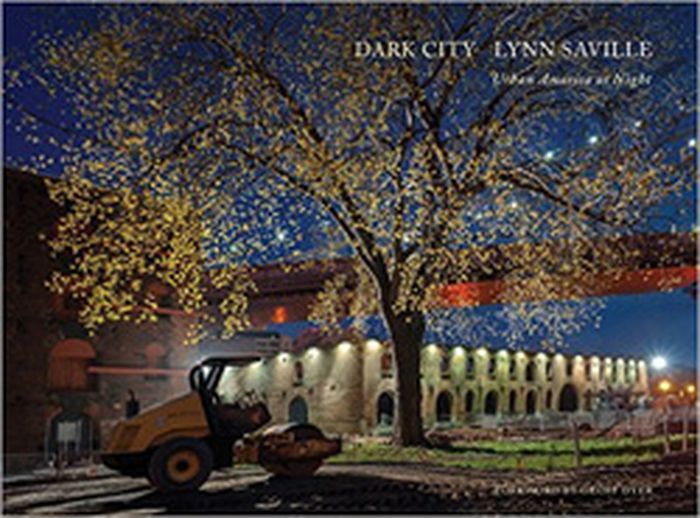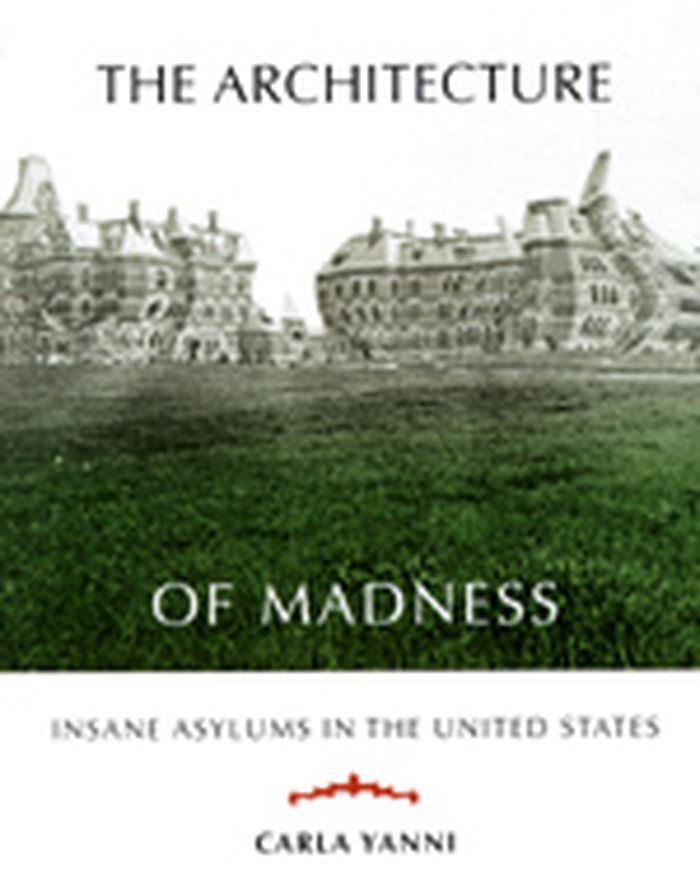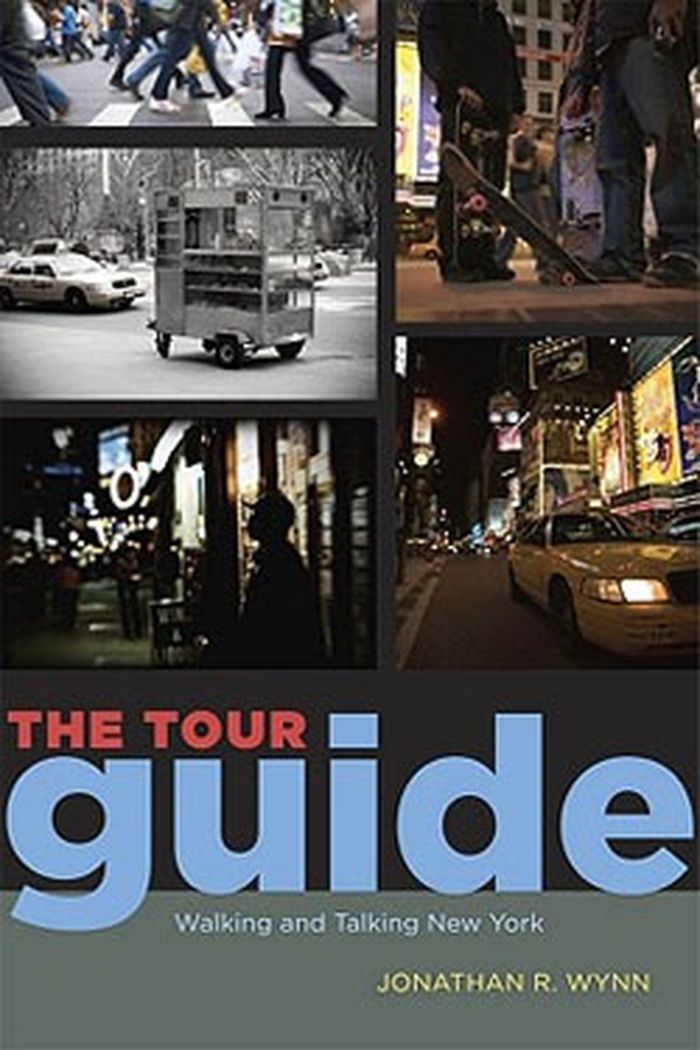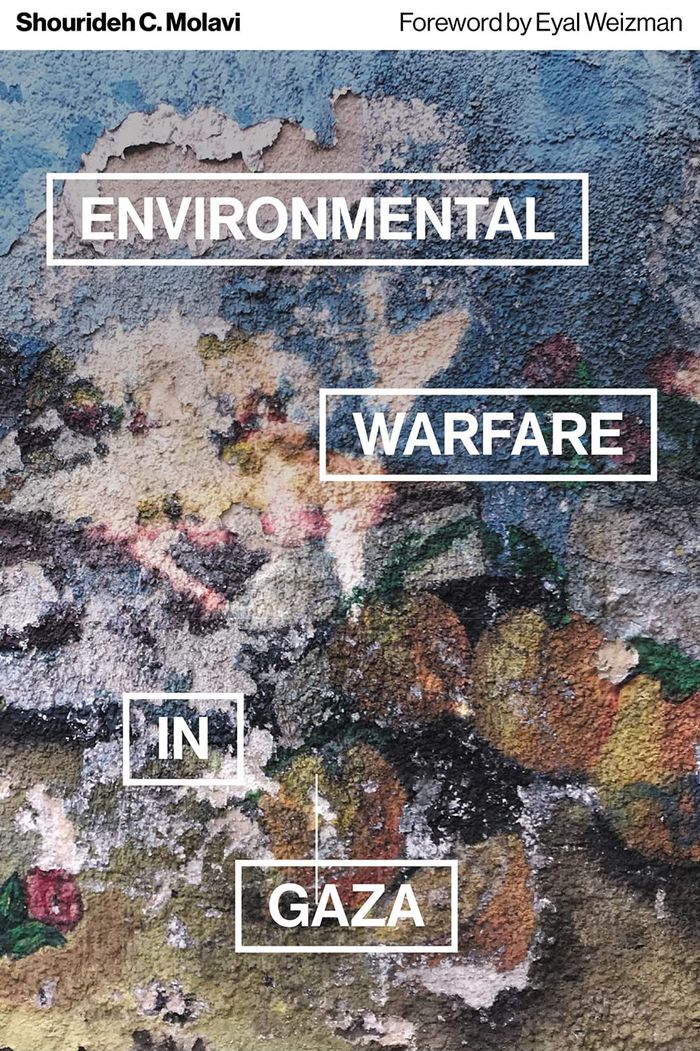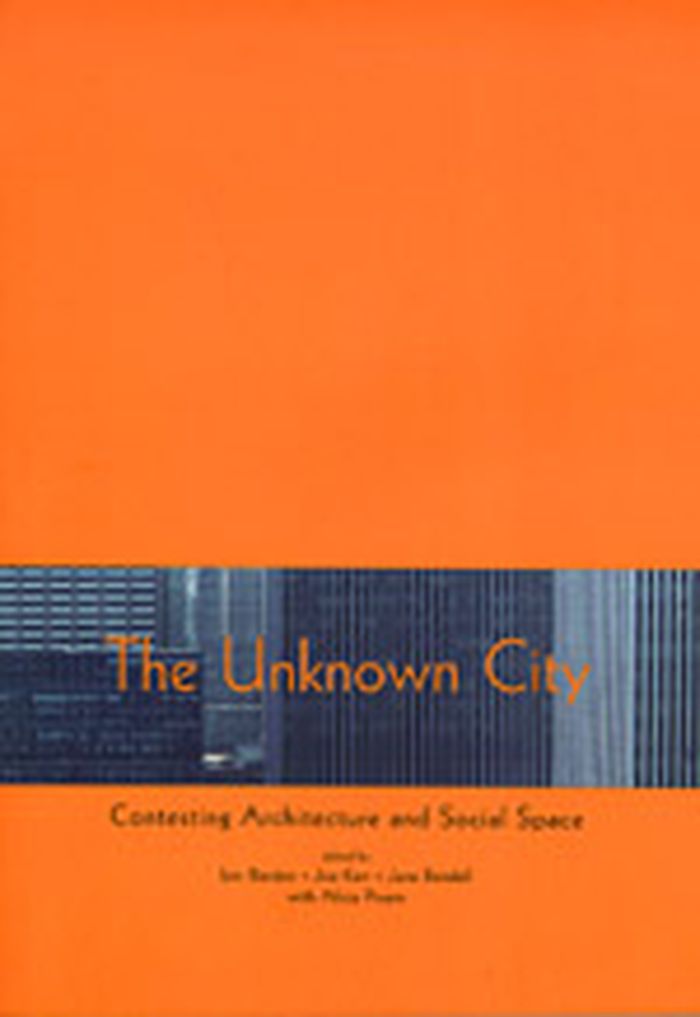Lynn Saville: Dark City
$60.00
(available to order)
Summary:
Arthur Danto has described Lynn Saville as New York's answer to Eugène Atget, because she "prowls her city at the other end of the day, picking up pieces of the past in the present, just before it is swallowed by shadows." For her new monograph, Dark City, Saville focused on vacant spaces--shuttered storefronts, back alleys, blank billboards, empty lots--with the(...)
Lynn Saville: Dark City
Actions:
Price:
$60.00
(available to order)
Summary:
Arthur Danto has described Lynn Saville as New York's answer to Eugène Atget, because she "prowls her city at the other end of the day, picking up pieces of the past in the present, just before it is swallowed by shadows." For her new monograph, Dark City, Saville focused on vacant spaces--shuttered storefronts, back alleys, blank billboards, empty lots--with the occasional ghostly figure hurrying through the frame. Working at twilight and dawn with a medium-format camera (setting up her tripod quickly so as not to attract police attention), Saville captured busy city streets depopulated and emptied out, industrial spaces and storefronts alike gone quiet. Color and light come from the sky, streetlights, neon signs or surveillance lighting. Seemingly otherworldly, the images in Dark City also tell a more pragmatic story of the changing urban landscape--vacancies caused by financial crisis, and construction projects spurred on by economic recovery, gentrification and development.
Photography monographs
The Black geographic
$38.95
(available to order)
Summary:
The contributors to ''The Black geographic'' explore the theoretical innovations of Black Geographies scholarship and how it approaches Blackness as historically and spatially situated. In studies that span from Oakland to the Alabama Black Belt to Senegal to Brazil, the contributors draw on ethnography, archival records, digital humanities, literary criticism, and art to(...)
The Black geographic
Actions:
Price:
$38.95
(available to order)
Summary:
The contributors to ''The Black geographic'' explore the theoretical innovations of Black Geographies scholarship and how it approaches Blackness as historically and spatially situated. In studies that span from Oakland to the Alabama Black Belt to Senegal to Brazil, the contributors draw on ethnography, archival records, digital humanities, literary criticism, and art to show how understanding the spatial dimensions of Black life contributes to a broader understanding of race and space. They examine key sites of inquiry: Black spatial imaginaries, resistance to racial violence, the geographies of racial capitalism, and struggles over urban space. Throughout, the contributors demonstrate that Blackness is itself a situating and place-making force, even as it is shaped by spatial processes and diasporic routes. Whether discussing eighteenth- and nineteenth-century abolitionist print records or migration and surveillance in Niger, this volume demonstrates that Black Geographies is a mode of analyzing Blackness that fundamentally challenges the very foundations of the field of geography and its historical entwinement with colonialism, enslavement, and imperialism. In short, it marks a new step in the evolution of the field.
Social
$37.00
(available to order)
Summary:
Elaborately conceived, grandly constructed insane asylums�ranging in appearance from classical temples to Gothic castles�were once a common sight looming on the outskirts of American towns and cities. Many of these buildings were razed long ago, and those that remain stand as grim reminders of an often cruel system. For much of the nineteenth century, however, these(...)
Commercial interiors, Building types
June 2007, Minnieapolis, London
The architecture of madness : insane asylums in the united states
Actions:
Price:
$37.00
(available to order)
Summary:
Elaborately conceived, grandly constructed insane asylums�ranging in appearance from classical temples to Gothic castles�were once a common sight looming on the outskirts of American towns and cities. Many of these buildings were razed long ago, and those that remain stand as grim reminders of an often cruel system. For much of the nineteenth century, however, these asylums epitomized the widely held belief among doctors and social reformers that insanity was a curable disease and that environment�architecture in particular�was the most effective means of treatment. In The Architecture of Madness, Carla Yanni tells a compelling story of therapeutic design, from America�s earliest purpose�built institutions for the insane to the asylum construction frenzy in the second half of the century. At the center of Yanni�s inquiry is Dr. Thomas Kirkbride, a Pennsylvania-born Quaker, who in the 1840s devised a novel way to house the mentally diseased that emphasized segregation by severity of illness, ease of treatment and surveillance, and ventilation. After the Civil War, American architects designed Kirkbride-plan hospitals across the country.
Commercial interiors, Building types
Silent Blocks
$42.95
(available to order)
Summary:
Au printemps 2020, à Toronto, David Cayley, ancien journaliste scientifique pour la radio publique canadienne et écrivain, s'interroge sur la pandémie. En s'appuyant sur sa connaissance des travaux philosophiques de son ami Ivan illich, il se demande si ' l'ontologie de systèmes' dans laquelle nous vivons n'aurait-elle pas créé cet état de crise ? Il alerte sur une forme(...)
Silent Blocks
Actions:
Price:
$42.95
(available to order)
Summary:
Au printemps 2020, à Toronto, David Cayley, ancien journaliste scientifique pour la radio publique canadienne et écrivain, s'interroge sur la pandémie. En s'appuyant sur sa connaissance des travaux philosophiques de son ami Ivan illich, il se demande si ' l'ontologie de systèmes' dans laquelle nous vivons n'aurait-elle pas créé cet état de crise ? Il alerte sur une forme de négation de la mort, laquelle 'dissimule tout le reste, à savoir l'expérimentation à grande échelle du contrôle social et de l'obéissance sociale, la légitimation de la téléprésence comme mode de sociabilité et d'enseignement, l'accroissement de la surveillance, la normalisation de la biopolitique et le renforcement des mesures préventives comme fondements de la vie sociale. À Paris au printemps de cette même année, avec l'instauration du confinement pour juguler la pandémie du coronavirus, la rue s'est soudainement vidée. Le dispositif sanitaire adossé à un dispositif policier aura permis au pouvoir une montée en régime – sans rencontrer de grande résistance – dans sa politique sécuritaire initiée des années plus tôt avec notamment le plan Vigipirate. Le photographe Myr Muratet a documenté, à sa façon, la ville silencieuse.
Photography monographs
$26.00
(available to order)
Summary:
Tour guides are a vital part of New York's raucous sidewalk culture, and, as "The Tour Guide" reveals, the tours they offer are as fascinatingly diverse - and eccentric - as the city itself. Visitors can take tours that cover Manhattan before the arrival of European settlers, the nineteenth-century Irish gangs of Five Points, the culinary traditions of Queens, the culture(...)
The tour guide: walking and talking New York
Actions:
Price:
$26.00
(available to order)
Summary:
Tour guides are a vital part of New York's raucous sidewalk culture, and, as "The Tour Guide" reveals, the tours they offer are as fascinatingly diverse - and eccentric - as the city itself. Visitors can take tours that cover Manhattan before the arrival of European settlers, the nineteenth-century Irish gangs of Five Points, the culinary traditions of Queens, the culture of Harlem, or even the surveillance cameras of Chelsea - in short, there are tours to satisfy anyone's curiosity about the city's past or present. And the guides are as intriguing as the subjects, we learn, as Jonathan R. Wynn explores the lives of the people behind the tours, introducing us to office workers looking for a diversion from their desk jobs, unemployed actors honing their vocal skills, and struggling retirees searching for a second calling. Matching years of research with his own experiences as a guide, Wynn also lays bare the grueling process of acquiring an official license and offers a how-to guide to designing and leading a tour.
City Guides
$45.00
(available to order)
Summary:
The perimeter around the occupied Gaza Strip is formed by a sophisticated system of fences, forts and surveillance technologies. With each Israeli incursion, a military no-go area, or a "buffer zone," is established along Gaza's "borders," extending deep into Palestinian residential areas and farmlands— further compounding the Gaza Strip's isolation from the rest of(...)
Environmental warfare in Gaza: Colonial violence and new landscapes of resistance
Actions:
Price:
$45.00
(available to order)
Summary:
The perimeter around the occupied Gaza Strip is formed by a sophisticated system of fences, forts and surveillance technologies. With each Israeli incursion, a military no-go area, or a "buffer zone," is established along Gaza's "borders," extending deep into Palestinian residential areas and farmlands— further compounding the Gaza Strip's isolation from the rest of Palestine. Since 2014, the bulldozing of Palestinian lands by the Israeli occupation forces has been complemented by unannounced aerial spraying of military herbicides, extending the reach of Israeli violence into the realm of chemical warfare. Today, the spraying has destroyed entire swaths of arable land in Gaza, forcibly changing a once-lush Palestinian landscape, and providing the Israeli army with better visibility to fire at Palestinian targets with lethal force from a distance. This book is a vivid document of this latest stage of Israeli warfare, including original maps, images and visualisations which deepen our understanding of its environmental and human impact. It collects new documents, original archival materials, stills of drone footage, first-hand testimonies of farmers, organisers and protesters, and documents affected vegetation in Gaza as "silent witnesses" to Israeli settler-colonial violence.
Arch Middle East
$42.00
(available in store)
Summary:
Western society is being terrorized by fear. Whether concerning national security, road safety or the protection of public health, every form of risk is meant to be spread, accounted for or eradicated. The safety and security obsession is leaving behind ever more visible traces, especially in public space. Speed bumps, smoke-free zones and surveillance cameras serve a(...)
Fear & space : the view of young designers in the Netherlands
Actions:
Price:
$42.00
(available in store)
Summary:
Western society is being terrorized by fear. Whether concerning national security, road safety or the protection of public health, every form of risk is meant to be spread, accounted for or eradicated. The safety and security obsession is leaving behind ever more visible traces, especially in public space. Speed bumps, smoke-free zones and surveillance cameras serve a society where prevention is the order of the day. This second book in the Group portraits series -a collaboration between the Netherlands architecture fund and the Netherlands foundation for visual arts, design and architecture (Fonds BKVB) - once again brings together four groups of young designers around a highly topical theme. As a sequel to the successful "City branding" book, this publication explores the various aspects of fear and prevention and considers the impact on contemporary urban space in four chapters. All the stops are pulled out: text, photography, research and design alternate in a thought-provoking sequence. This publication is the result of intensive research into the presence of fear in our Western society and the role that architecture might play herein. It is therefore an instrument for students, researchers, architects and policy-makers who are concerned with security issues.
Architectural Theory
$42.00
(available to order)
Summary:
"The Unknown City" takes its place in the emerging architectural literature that looks beyond design process and buildings to discover new ways of looking at the urban experience. A multistranded contemplation of the notion of "knowing a place," it is about both the existence and the possibilities of architecture and the city. An important inspiration for the book is(...)
Urban Theory
October 2002, Cambridge, Massachusetts
The unknown city : contesting architecture and social space
Actions:
Price:
$42.00
(available to order)
Summary:
"The Unknown City" takes its place in the emerging architectural literature that looks beyond design process and buildings to discover new ways of looking at the urban experience. A multistranded contemplation of the notion of "knowing a place," it is about both the existence and the possibilities of architecture and the city. An important inspiration for the book is the work of Henri Lefebvre, in particular his ideas on space as a historical production. Many of the essays also draw on the social critique and tactics of the Situationist movement. The international gathering of contributors includes art, architectural, and urban historians and theorists; urban geographers; architects, artists, and filmmakers; and literary and cultural theorists. The essays range from abstract considerations of spatial production and representation to such concrete examples of urban domination as video surveillance and Regency London as the site of male pleasure. Although many of the essays are driven by social, cultural, and urban theory, they also tell real stories about real places. Each piece is in some way a critique of capitalism and a thought experiment about how designers and city dwellers working together can shape the cities of tomorrow.
Urban Theory
$54.95
(available in store)
Summary:
Un nombre croissant d'artistes contemporains opte pour le mode de l'enquête. Plutôt que de « faire œuvre », ces artistes se soucient avant tout de documenter la violence d'État, l'effet des technologies répressives ou la destruction de l'environnement. En parallèle, des journalistes, des avocats et des activistes ont de plus en plus recours à des pratiques de(...)
L'art de la contre-enquête : Esthétiques de l'investigation, politiques de vérité
Actions:
Price:
$54.95
(available in store)
Summary:
Un nombre croissant d'artistes contemporains opte pour le mode de l'enquête. Plutôt que de « faire œuvre », ces artistes se soucient avant tout de documenter la violence d'État, l'effet des technologies répressives ou la destruction de l'environnement. En parallèle, des journalistes, des avocats et des activistes ont de plus en plus recours à des pratiques de visualisation issues du domaine de l'art. En croisant vidéos amateurs, images satellites et témoignages, des contre-enquêtes voient le jour dont la dimension visuelle et esthétique a d'autant plus d'impact. Le livre donne à voir toute l'ampleur de cette nouvelle « esthétique d'investigation » : en mobilisant des stratégies éprouvées en art ou en architecture, il s'agit de montrer les torts subis et de faire émerger une vérité souvent inconfortable. Le travail mené depuis désormais de longues années par « Forensic Architecture » rejoint d'autres pratiques de contre-analyse citoyenne, afin de briser les monopoles d'État sur les technologies de surveillance et de contredire les récits officiels. Que ce soit dans l'atelier ou le laboratoire, la salle d'audience ou la galerie, en ligne ou dans la rue, cet art de la contre-enquête replace la vérité au cœur d'un souci partagé et tisse les liens d'un nouveau « sens commun ».
Architectural Theory
$70.00
(available to order)
Summary:
Inspired by the rise of environmental psychology and increasing support for behavioral research after the Second World War, new initiatives at the federal, state, and local levels looked to influence the human psyche through form, or elicit desired behaviors with environmental incentives, implementing what Joy Knoblauch calls 'psychological functionalism.' Recruited by(...)
The architecture of good behaviour
Actions:
Price:
$70.00
(available to order)
Summary:
Inspired by the rise of environmental psychology and increasing support for behavioral research after the Second World War, new initiatives at the federal, state, and local levels looked to influence the human psyche through form, or elicit desired behaviors with environmental incentives, implementing what Joy Knoblauch calls 'psychological functionalism.' Recruited by federal construction and research programs for institutional reform and expansion — which included hospitals, mental health centers, prisons, and public housing—architects theorized new ways to control behavior and make it more functional by exercising soft power, or power through persuasion, with their designs. In the 1960s – 1970s era of anti-institutional sentiment, they hoped to offer an enlightened, palatable, more humane solution to larger social problems related to health, mental health, justice, and security of the population by applying psychological expertise to institutional design. In turn, Knoblauch argues, architects gained new roles as researchers, organizers, and writers while theories of confinement, territory, and surveillance proliferated. 'The Architecture of Good Behavior' explores psychological functionalism as a political tool and the architectural projects funded by a postwar nation in its efforts to govern, exert control over, and ultimately pacify its patients, prisoners, and residents.
Architectural Theory
